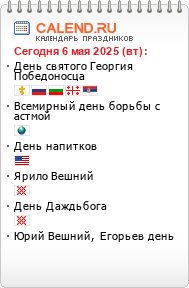
информация и фото с сайта http://www.infodog.ru
Предками шведского лаппхунда могли быть полярные волки и собаки, останки которых обнаружены в северной Норвегии (возраст археологических находок около 7000 лет). Если это так, то шведский лаппхунд может быть общим предком всех шпицеоб-разных собак. Лаппхунд всегда использовался для пастьбы оленей и как ездовая собака. Порода была популярна в Швеции на протяжении веков, но зарегистрирована в FCI только в 1944 г.
Шведский лаппхунд
Сообщений 1 страница 10 из 10
Поделиться12008-06-30 18:53:03
Поделиться22008-06-30 18:53:17
Страна происхождения Швеция
Исходное название Svensk Lapphund
Другие названия Lapplandska Spetz. Шведский шпиц.
Поделиться32008-06-30 18:53:27
Характеристика породы
Выносливая, бдительная, уравновешенная, смелая и уверенная в себе собака. Предана хозяину и его семье. Недоверчива к чужим людям. Хороший сторож. При воспитании следует проявлять настойчивость.
Поделиться42008-06-30 18:53:34
Содержание и уход
Требуется большая физическая нагрузка. Необходимо регулярно вычесывать собаку щеткой и расчесывать.
Поделиться52008-06-30 18:53:44
Использование
Пастушья собака, служебная собака, сторожевая собака, собака-компаньон.
Поделиться62008-06-30 18:54:16
Внешний вид
Голова
Череп округлой формы. Переход ото лба к морде хорошо заметен. Спинка носа прямая. Губы плотно прилегающие.
Глаза
Темные.
Уши
Короткие, широкие у основания. Поставлены широко. Стоячие, очень подвижные.
Корпус
Удлиненный. Шея средней длины. Ребра изогнутые. Спина прямая. Живот подобран.
Конечности
Лапы овальные, компактные.
Хвост
Средней длины или короткий. Собака держит его над крупом. Покрыт густой шерстью.
Поделиться72008-06-30 18:54:24
Волосяной покров
Шерсть длинная, прямая, густая. На голове и передней стороне конечностей — более короткая. На шее — воротник. Подшерсток мягкий, плотный.
Поделиться82008-06-30 18:54:34
Окрас
Однотонный (черный, темно-каштановый) или пегий.
Поделиться92008-06-30 18:54:44
Высота в холке
Кобели: 45 — 50 см. Суки: 40 — 45 см.
Вес
15-20 кг.
Поделиться102008-06-30 18:55:08
FCI-Standard N° 135 / 22. 09. 2000 / GB
SWEDISH LAPPHUND
(Svensk Lapphund)
TRANSLATION : Renée Sporre Willes, in collaboration with R. Triquet.
ORIGIN : Sweden.
DATE OF PUBLICATION OF THE ORIGINAL VALID STANDARD : 26.06.2000.
UTILIZATION : Herding dog, nowadays mainly kept as a companion dog.
CLASSIFICATION F.C.I. : Group 5 Spitz and primitive types.
Section 3 Nordic Watchdogs and Herders.
Without working trial.
BRIEF HISTORICAL SUMMARY : The Swedish Lapphund (a Nordic Spitz used in the past for reindeer herding by the nomadic Laplanders) has been known in the Nordic area for centuries.
GENERAL APPEARANCE : Typical Spitz dog of slightly less than medium size and with proud head carriage. Its coat is weather resistant.
IMPORTANT PROPORTIONS : Rectangular body shape.
BEHAVIOUR / TEMPERAMENT : Lively, alert, kind and affectionate. The Lapphund is very receptive and willing to work. Its abilities as a good guard and herding dog made it very useful in the reindeer trade. It is very versatile, suitable for obedience training, agility, herding, tracking, etc. It is easy to train, full of endurance and toughness.
HEAD
CRANIAL REGION :
Skull : Slightly longer than broad; forehead rounded and occiput not clearly defined.
Stop : Very well marked.
FACIAL REGION :
Nose : Preferably dark, or very black.
Muzzle : A little more than one third of the length of the head. Foreface strong, evenly tapering towards tip of nose. Nose bridge straight.
Lips : Close fitting. Palate and lips strongly pigmented.
Jaws/Teeth : Scissor bite with evenly set and well developed teeth.
Eyes : Set well apart, round, fairly big, but not protruding. Brown, preferably dark brown and full of expression. Rims strongly pigmented.
Ears : Triangular, broad at base, small, pricked, tips slightly rounded. Set well apart and very mobile. Tipped ears are undesirable but not as eliminating fault.
NECK : Medium length, clean-cut and powerful.
BODY : Well put together, slightly longer than height at withers.
Back : Level, strong, muscular and springy.
Loin : Short and broad.
Croup : Proportionally long and broad, slightly sloping and well muscled.
Chest : Rather deep reaching to elbow. Ribcage proportionally long, oval and with well developed last ribs. Forechest well developed; well defined breastbone.
Underline and belly : Belly slightly tucked up.
TAIL : Rather high set, reaching to hock when extended. Carried curled over back when the dog is moving.
LIMBS
FOREQUARTERS : Forequarters should be sufficiently angulated at shoulders and elbows to provide good reach.
Shoulders : Shoulder blade well laid back.
Elbows : Fitting close to chest.
Forearm : Straight, strong and parallel, standing and moving.
Pasterns : Sufficiently slanting.
Forefeet : Strong, oval, with tightly knit toes, hardy and elastic padding; well covered with fur also between pads. Nails and pads strongly pigmented.
HINDQUARTERS : Well angulated, but not exaggerated, in stifle and hock joint.
Upper thigh : Muscular.
Hocks : Low-set to give power of propulsion. Dewclaws undesirable.
Hind feet : As front feet.
GAIT / MOVEMENT : Light and springy, covering ground, with drive.
COAT
HAIR : Profuse double coat. Hair standing straight out from body, undercoat dense and very finely curled. Short on head and front of legs. Longer on brisket, backside of legs and on tail. Bushy, long and dense on tail. Forming a ruff round neck.
COLOUR : Usually solid black; bronzing is typical. Liverbrown was known a long time ago. White on chest, on feet and tip of tail is permissible but more white is undesirable.
HEIGHT :
Height at withers : Ideal size for males : 48 cm,
Ideal size for females : 43 cm.
Allowance for +/- 3 cm.
FAULTS : Any departure from the foregoing points should be considered a fault and the seriousness with which the fault should be regarded should be in exact proportion to its degree.
SEVERE FAULT :
• No trace of undercoat.
ELIMINATING FAULTS :
• Aggressive or overly shy.
• Untypical.
• Abnormalities.
Any dog clearly showing physical or behavioural abnormalities shall be disqualified.
N.B. : Male animals should have two apparently normal testicles fully descended into the scrotum.
































